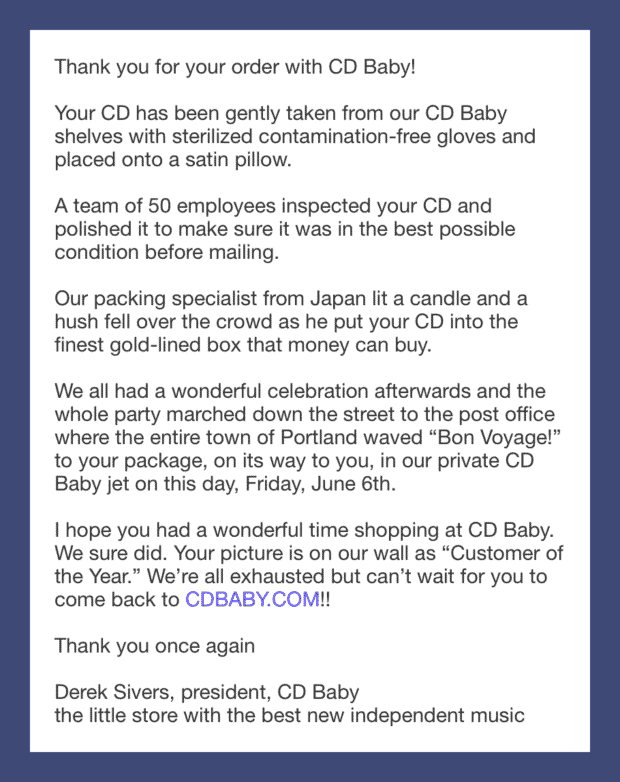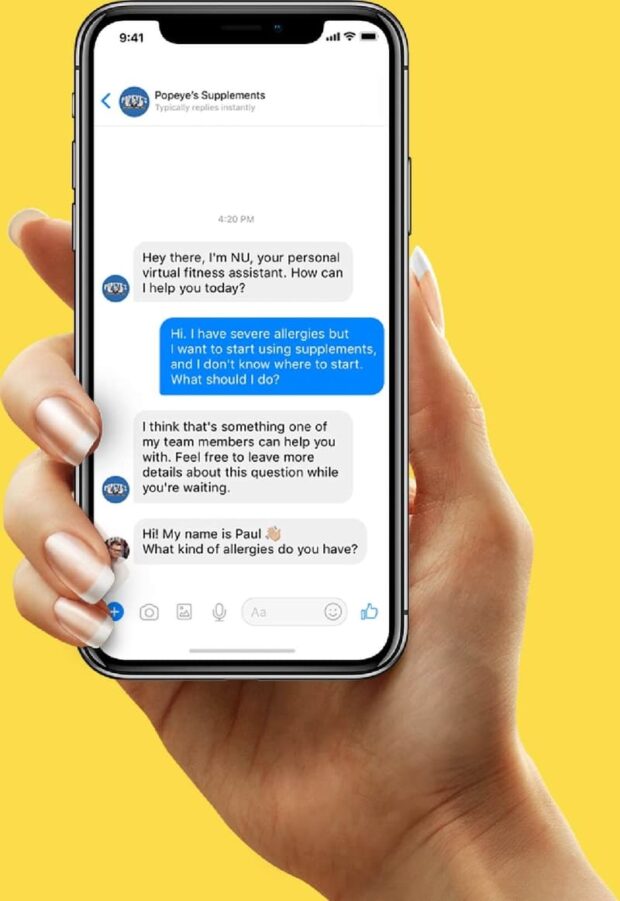There’s no question that a customer experience strategy is key to business success in today’s market.
But knowing where to start when creating a winning strategy can be daunting.
Never fear – your friendly neighborhood business blogger is here!
In this post, you’ll uncover
- what a customer experience strategy is
- why you should have one
- 9 easy steps that will take you to success
Feel free to save this article and use it as a template for your next customer experience strategy.
Bonus: Get our free, fully customizable Customer Experience Strategy Template that will help you understand your customers and reach your business goals.
What is a customer experience strategy?
A customer experience strategy is a plan for how to improve customer experience across all touchpoints. This includes initial awareness to purchase and beyond.
A well-thought-out strategy involves a defined goal and the actionable steps needed to take to get there. It will also consider how to measure and optimize your efforts!
Customer experience (CX) is a customer’s perspective when interacting with your business. You can learn more about what customer experience is here!
Why create a customer experience strategy
Initiatives with a strategy behind them are much, much stronger than simply setting goals. Support your customer experience efforts with a proper strategy in place. Your efforts will have logic and planning to support them. This lets you make informed, proactive decisions instead of reactive choices. You’ll also be less likely to risk your budget on tactics that aren’t working with consistent monitoring.
Accidental success can only take you so far. A well-laid-out customer experience strategy can give you planned, targeted growth.
How to create a customer experience strategy
Creating a customer experience strategy can seem daunting, but it doesn’t have to be. Follow these nine easy, templated steps, and you’ll be left holding a winning strategy.
1. Define your goals
Your first step should be to decide what you’re working toward. Set your objectives and goals in the very beginning. With these in place, you’ll be able to measure your progress, successes, and return on investment (ROI).
Each of your goals needs to be:
- Specific
- Measurable
- Attainable
- Relevant
- Time-bound
The SMART goal framework gives you clear, attainable goals.
A SMART goal example for customer experience could be: To increase our NPS score by a full point this quarter.
Or, more specifically: To decrease the time it takes a customer to solve an issue by 20% on average this quarter.
In this case, the second, specific goal works toward the first high-level goal. You can (and likely will) have multiple goals to work toward in an overall strategy. Start with one high-level goal and work your way down.
2. Do an audit of your existing customer experience
If you’re not an entirely new business, then your brand has already made an impression on your customers. You’ll want to discover what you’re offering customers from their perspective.
Do an audit of all of your existing customer experience touchpoints. You can chart them out, rate them, and note any potential pain points, room for opportunity, and what you’re doing well.
Structure this like a traditional SWOT analysis. This is a compilation of your company’s strengths, weaknesses, opportunities, and threats. But, focus it on your customer experience offerings.
3. Know your competitors
To stand out, you first need to know who you’re up against. What are others in your industry doing in terms of CX strategy? And who should you be looking at?
You might already have an idea of who your direct competitors are, but Google will tell you indefinitely who the top SERP dogs are. To uncover this, first identify your competitive keywords. One popular method is to use the Google Adwords Keyword Planner to analyze your website.
Then, you can use your top, most relevant five or ten keywords to see who’s ranking for them on Google. Simply type the keywords into the search bar and see who hits first.
Once you know who your competitors are, you may want to keep an eye on them. Use Hootsuite Streams to track them across every social network.
Try Hootsuite free for 30 days
4. Do your research (AKA a competitive analysis)
Spend some time researching the customer experience landscape. You’ll want to answer where your brand and your competitors stand in the marketplace.
Take a look at positive and negative reviews by customers. Make sure you evaluate their FAQ page and whether or not they use quality chatbots. If you can, engage your competitors in a faux customer service request and see how they respond.
Performing a SWOT analysis of your and your competitors’ customer service offering is a clear way to see gaps in the marketplace.
This in-depth guide on social media competitive analysis may give you some inspiration on how to tackle your customer experience research.
By understanding the customer experience landscape, you can make sure that your brand is differentiated in a way that matters to customers. You can also avoid the customer service pitfalls that can cause customers to take their business elsewhere.
5. Create audience personas and customer journeys
Personas and customer journeys help you to understand who you’re serving and what they’re experiencing when they interact with your brand.
Customer journeys will show you each touchpoint your customer has with you. You can anticipate any pain points and try to make each step a little more enjoyable. And, when you know who your customers are, you can personalize those moments of joy.
For example, your persona describes busy, time-starved parents who dislike spending too much time on weeknight meals.
Your customer journey shows those folks often using their mobile to order groceries early in the week.
The solution to making their customer experience more enjoyable could be to have a popup with a hassle-free, kid-friendly dinner recipe involving a few items they’ve purchased before they checkout.
Moments of joy could be even simpler, like CD Baby’s confirmation email. Allegedly, CD Baby’s founder, Derek Sivers took twenty minutes to write it in an attempt to make people smile. The email has been shared thousands of times, and on the topic, Sivers’ has said, “…please know that it’s often the tiny details that really thrill people enough to make them tell all their friends about you.”
Source: CD Baby’s Confirmation Email
Bonus: Get our free, fully customizable Customer Experience Strategy Template that will help you understand your customers and reach your business goals.
6. Plan your implementation, tactics, or execution
Once you’ve completed the above steps, you should have an idea of:
- Where you want to go (your goals)
- The opportunities available to you and the gaps you can occupy
Now, it’s time to think about how you’re going to achieve your goals through the opportunities available. This step in planning your strategy needs to build on your previous answers, so everyone’s plan will be different.
Take your time and map out the steps needed to implement each of your action steps. For example, maybe you noticed your competitors’ customers all complaining about how long of a wait it is to access a customer service representative.
An easy win would be to implement a chatbot on your site that can take down a customer’s information and then have an agent contact them directly without the annoying waiting around. Your tactics here would be to:
- Find a chatbot that works for you (Heyday, for example, integrates directly with your human team)
- Implement it onto your site
- Do some testing to make sure it works
- And launch!
Source: Heyday
Note, chatbots aren’t only useful on your website. If you’re on Facebook, Instagram, or Shopify, you should consider working one into your overall digital strategy. Social media customer service is extremely important.
7. Send out surveys
When you don’t know (and often, you don’t), then ask! We don’t mean to be rude, but you can’t know what your customers actually think if you don’t ask them. Send out surveys to crowdsource sentiment on your brand, your customer experience, and products or services.
You can craft your surveys specifically to ask questions about your customers’ experience with your brand. Have you noticed an issue with repeat customers? Send one out after folks have purchased a product or service and solicit feedback.
8. Measure
You’ll need to measure your efforts to understand whether or not your strategy is effective. Consider common customer experience metrics like:
- Net Promoter Score,
- Customer Effort Score,
- Customer Satisfaction Score and,
- Average Response Time.
You can see more details on what these common metrics are and how to calculate them here.
9. Optimize
The last part of any great strategy is to make it better.
Keep asking folks what they want to see from you, how you can improve, and what’s working and what’s not. Continue to stay aware of what your competitors are up to on social media — shout out again to Hootsuite Streams for automating this task! And check in with your customer service team.
The actions you can take to make their lives easier will likely benefit your customers, too, like a chatbot designed for your business.
Retail bots improve your customer’s shopping experience, while allowing your service team to focus on higher-value interactions.Grow your online and in-store sales with a conversational AI retail chatbot by Heyday by Hootsuite.
Turn customer service conversations into sales with Heyday. Improve response times and sell more products. See it in action.
The post Create a Customer Experience Strategy [FREE TEMPLATE] appeared first on Social Media Marketing & Management Dashboard.
![Create a Customer Experience Strategy [FREE TEMPLATE]](https://localseoresources.com/wp-content/uploads/2022/07/Customer-experience-strategy-620x782.png)






Recent Comments